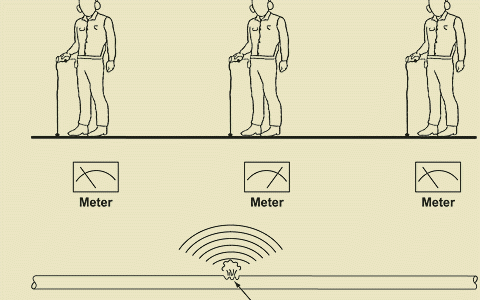Acoustic or ultrasonic leak detection is one of the methods used for detecting leaks in vacuum and pressurized systems. When fluids leak, the turbulent flow, cavitation, or high flow velocity generates sound waves. These sound disturbances can be transmitted through the pressurized fluid medium or surrounding equipment near the leak site.
Ultrasonic waves can be detected at a distance from their source using acoustic probes. This method identifies leaks by detecting the sound waves created by the sudden drop in pressure. The amplitude of these waves can help determine the size of the leak, with larger leaks generating stronger signals.
This system works best in high-pressure conditions and with low flow rates. However, to increase accuracy, external noise should be minimized, making it unsuitable for noisy and crowded environments.


An ultrasonic leak detector converts the sound waves into audible frequencies that can be heard through speakers or headphones. The amplitude of these waves is also displayed on a screen, enabling the operator to analyze the data and locate the leak. The factors influencing acoustic leak detection include: device precision, ultrasonic frequency, acoustic shadowing, fluid viscosity, fluid velocity, pipe material, pressure differential, and leak size.
Drawbacks of Acoustic Leak Detection:
- Background noise can mask the sound of leaks, especially at high flow rates.
- For extensive pipelines, larger sensors are required, and the system may not detect small leaks.
- It is less effective on plastic pipes, low-pressure lines, large-diameter pipes, and underground pipelines.
According to ASNT Chapter 11, the maximum accuracy of this method is approximately 10^-4 Pa.m³/s, though this accuracy diminishes with calm flows. The method's effectiveness heavily relies on the operator's experience.
Comparison with Helium Leak Detection
According to ASNT Chapter 7, helium leak detection has an accuracy of up to 10^-13 Pa.m³/s, which is significantly more precise than the acoustic method.
Unlike ultrasonic detection, helium leak detection can be applied to pipes of various diameters and materials under any pressure. Additionally, this method can be used on surfaces with different coatings (soil, concrete, etc.), regardless of their compactness. Another key advantage is its lower dependence on operator expertise and its ability to be performed in real-time.

